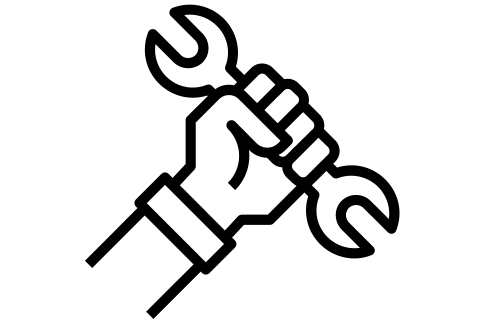How to fix a pinhole in a radiator guide
Our guide will show you how to fix a pinhole in your radiator. This guide includes tips, prices and step-by-step instructions.
Radiators can get damaged over time, which can lead to water escaping. This can cause problems such as low pressure in your boiler and central heating system.
It is important to know how to fix a pinhole leak from a central heating radiator. This guide will help you fix any radiator that is leaking.
We’ll also look at other areas such as radiators that leak from the top, small radiator leak repairs, pinhole leaks, and radiators that leak through the radiators.

How do you fix a pinhole leak in a central heating radiator
A pinhole leak can occur if the leak is located in the main radiator body.
This will likely require a replacement radiator in the medium or long-term, but short-term solutions can stop the leak to get your central heating working and prevent the low boiler pressure.
You can use a feed-and-expansion system to add a plastic resin sealant. This will stop the water from rushing through the radiator and keep it under control until you purchase a new one.
The pinhole leak is due to corrosion and will likely be difficult to fix. This is especially true considering the relatively low cost of new replacement radiators. You don’t need to worry about having to pay for repairs within a few years.
You should carefully examine the products used to stem the pinhole leak to ensure that they are compatible with your system. For example, the plastic resin sealant cannot be used in closed central heating systems. They are not suitable for larger holes, although an LSX compound can be used as an external fix for small holes.

Will this be a permanent solution for the pinhole leak?
These are temporary fixes, but they won’t solve the problem. If these short-term fixes fail, you will once again have a problem leak.
If you prefer to deal with the problem yourself, it is important to learn how to fix a pinhole in a central heating radiator. This will stop the damage from getting worse. How do you fix a pinhole in your radiator? Follow these instructions. Take a look at the floor beneath your radiator.
Any damp patches in the area will indicate a leak. It is possible to dry the radiator completely and it will be easier for you to find the source of the leak. Turn off the water supply to the radiator and drain it. To collect any water that escapes during radiator leak repair, use towels and a bucket.
Clean, dry and dust the radiator’s exterior. Apply epoxy putty to the radiator’s surface over the area where there is a pinhole leak. Let this dry before you refill your radiator or turn the water off. A leak sealer solution can be added to the central heating water tank to repair a pinhole in your radiator. The fluid will flow through the system, sealing any leaks.

How to fix a leaking radiator
It is quite common for radiator valves to leak. Although it is not difficult to repair a radiator leak, it is important to do your best to prevent the leak from getting worse. A small radiator leak repair can be done in the same way as for larger radiators. Here are the steps to fix a leaky radiator valve.
Use a spanner to loosen the union nut. Grab a bucket, then open the bleed valve. Let any water drain out. The valve tail can be wrapped with PTFE tape. This should be done at least 10 times. To tighten the union nuts, use your spanner. The bleed valve should be opened. Re-connect the water supply to the radiator. Check for leaks and close the bleed valve.
Radiator leakage from the top

There are many points on a radiator where there are potential leaks. Leakage from the top of your radiator can often be caused by a problem with your bleed valve. The following steps can be used to repair a radiator leak: First, make sure the bleed valve is working properly.
Use a Q-tip to gently push the bleed valve’s opening. If the Q-tip comes out wet, it is likely that you have found your leak. To tighten the bleed valve screw, turn the bleed key counterclockwise.
How to stop a pinhole leak in a radiator
Pinholes in radiators are easy to repair, but larger holes can prove more difficult. You will first need to determine if it is possible to repair a hole in your radiator. You can temporarily seal small holes with a jointing compound and a leak sealer.
Larger holes, however, can’t be temporarily sealed. Unfortunately, it is not always possible to repair a larger hole in your radiator. You will need to replace your radiator if it is severely corroded by rust or has larger holes.
How to fix holes in radiator pipes.
This could be a problem as it allows mice to gain entry to your home. You can use filler if the holes are not large enough.
Once dry, smoothen the surface with sandpaper and then paint. Steel wool wrapped in caulk could be used. You can also use cement, metal sheeting, or a lath screen to fill larger holes. Locate a radiator repair specialist near you.
If you have a leak in your boiler, read our guide here on boiler leaking water for more information.

How to fix a leaky bathroom radiator.

Towel radiators are a great and efficient way to heat your bathroom and keep your towels warm. These radiators are becoming increasingly popular and are a great investment. Towel radiators can leak, just like standard radiators. How do you fix a bathroom radiator that is leaking? First, locate the source of the leak. You can check the Valves section for more information.
You can fix spindles by using a spanner or wrapping tape around the gland nut. Repairing pipe joints: This is similar to fixing the spindle. You can either tighten the joint or wrap it with tape.
What is the cost to repair a radiator?
You may need to call a professional if you aren’t confident in repairing your radiator or if you have tried all the guides above and still have a leak, A tradesperson will do a great job on your radiator and it will be done quickly. For more complicated repairs, you can also benefit from their many years of experience.
You may wonder, “How much does it cost to fix a radiator?” It will generally cost between £40 and £180. However, this can vary depending on the job. You will need to replace the radiator if it is damaged beyond repair.
The cost of a replacement radiator will typically be between £80 and £300, but it will likely be cheaper if you do it yourself.
Speak to one of our experts who can help you find a qualified professional to repair or replace your radiator. Enter your postcode to connect with local experts. For more information on expert radiator replacement, see our cost to replace or remove a radiator guide.

FAQ’S
How effective are fixes like plastic resin sealants for pinhole leaks in radiators, and what are the long-term implications?
Temporary fixes like plastic resin sealants can effectively stop pinhole leaks in radiators by sealing the leak and preventing water from escaping.
However, the long-term implications of such solutions may vary. While they provide a quick and convenient way to address leaks, they are not permanent fixes and may only offer temporary relief.
Over time, the effectiveness of the sealant may diminish, especially if the radiator continues to corrode or if the leak worsens.
Additionally, reliance on temporary fixes may mask underlying issues with the radiator, such as extensive corrosion or structural damage, which could lead to further problems down the line. Therefore, while plastic resin sealants can offer a temporary solution.
What are more the alternative methods to address pinhole leaks in radiators?

Aside from using epoxy putty or leak sealer solutions, there are alternative methods to address pinhole leaks in radiators. One method involves soldering or welding the pinhole shut, which requires specialised equipment and skills.
Another option is to use a radiator patch kit, which typically consists of a patch or adhesive material designed specifically for radiator repair.
Additionally, some individuals may opt to replace the damaged section of the radiator entirely, especially if the leak is extensive or if the radiator is old and prone to corrosion. It’s essential to assess the severity of the leak and choose the most appropriate repair method based on the condition of the radiator and the extent of the damage.
What factors determine repairing a radiator, or replacing it, particularly in cases of pinhole leaks and corrosion damage?
Several factors influence the decision between repairing a radiator and replacing it, especially in cases of prevalent pinhole leaks or extensive corrosion damage. The age and condition of the radiator is important to take into account. If the radiator is relatively new and in good condition aside from the leaks, repairing it with a temporary fix or a more permanent solution might be sufficient.
However, if the radiator is old, corroded, or prone to recurring leaks, replacing it may be a more practical long-term solution to prevent further issues and ensure optimal heating efficiency. Additionally, the cost of repairs versus the cost of a new radiator is another important factor to weigh.
Sometimes, the expense of repeatedly repairing an old radiator may outweigh the cost of buying a new one.
Finally, the availability of replacement parts and the ease of finding a suitable replacement radiator also influence the decision-making process. Ultimately, homeowners should consider these factors carefully and consult with professionals to determine the most cost-effective and sustainable solution for their specific situation.